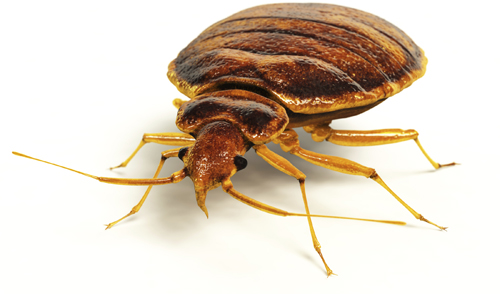The Ultimate Bed Bug Treatment Manual: Whatever You Need to Prosper
The Ultimate Bed Bug Treatment Manual: Whatever You Need to Prosper
Blog Article
Discover the Ideal Bed Bug Treatment Methods for Your Insect Control Plan
When encountered with a bed bug infestation, recognizing the most reliable therapy approaches becomes critical for effective pest control. Choosing the best bed pest therapy approach customized to your certain situation is vital for achieving enduring results.
Identifying Bed Pest Infestations
Recognizing signs of a bed pest invasion can be critical in efficiently dealing with the issue and protecting against further spread in a prompt manner (Bed bug treatment). Bed pests are elusive insects that hide during the day and come out during the night to feed on blood. Usual signs of a bed pest infestation include reddish-brown stains on bed linens or furnishings from smashed pests, little dark areas that are bed bug waste matter, dropped skins in areas where bed bugs hide, and a sweet, moldy smell in extreme problems
Motivate identification of a bed pest infestation is critical to stop the scenario from rising and requiring extra substantial treatment techniques. If you believe a bed pest problem, it is recommended to seek expert bug control assistance to effectively eliminate the parasites from your home.
Non-Chemical Therapy Approaches
Non-chemical treatment techniques use efficient choices for attending to bed insect infestations without depending on conventional chemicals. Heat therapy is one such method that involves increasing the temperature level in plagued locations to levels that are dangerous to bed bugs. Additionally, steam treatment can be employed to eliminate bed insects and their eggs by subjecting them to high temperatures, making it a useful non-chemical alternative for combating infestations.
Chemical Treatment Options
Having actually checked out efficient non-chemical approaches for dealing with bed bug infestations, it is necessary to consider the effectiveness of chemical treatment choices in combating these durable bugs. Chemical treatments play an essential role in bed pest control, particularly in extreme infestations where non-chemical methods might not give adequate relief. There are various kinds of chemical therapies readily available for handling bed pests, including insecticides, desiccants, and insect growth regulators.
Pesticides are commonly utilized to eliminate bed insects on call and offer recurring security against future problems (Bed bug treatment). Desiccants function by harming the external waxy layer of bed bugs, leading to dehydration and fatality. Insect development regulators interrupt the bed pest life cycle by preventing their development from nymphs to grownups, inevitably decreasing the populace with time
When considering chemical treatment alternatives, it is crucial to prioritize safety and security by complying with tag directions, utilizing appropriate protective equipment, and considering the possible risks to people and pets. Consulting with an expert bug control service can assist establish the most risk-free and reliable chemical treatment for your particular bed bug infestation.
Integrated Parasite Management Techniques

IPM methods for bed pest control might include thorough evaluation to figure out the level of problem, identification of key harborage websites, and application of sanitation steps. Furthermore, lowering mess, securing holes and fractures, and eliminating potential hiding places can assist discourage bed insects from developing themselves.
In addition, non-chemical control methods such as heat therapy, vacuuming, vapor cleaning, and the usage of bed bug catches can be efficient parts of an IPM plan. These methods target bed pests at various life stages and disrupt their reproductive cycle, bring about populace reduction.
Routine monitoring and follow-up assessments are vital in IPM to examine the efficiency of control measures and make essential changes. By incorporating incorporated pest monitoring approaches right into your bug control plan, you can accomplish long-term success in handling bed bug infestations.
Expert Elimination Solutions
Professional extermination services supply customized experience and sources for efficiently eradicating bed pest invasions. Bed insect problems can published here be specifically challenging to take on as a result of their resilience and ability to conceal in numerous splits and gaps. Professional pest control operators are educated to recognize the indications of you can find out more bed bugs, find their hiding areas, and employ targeted therapy methods to eliminate them successfully.
When selecting a professional extermination solution for bed bug control, it is important to search for certified and licensed bug control firms with experience in dealing especially with bed bugs. These professionals have access to a variety of treatment choices, including chemical and non-chemical techniques, to properly fight bed insect infestations while making certain the security of occupants and family pets.
In addition, specialist pest control men can supply follow-up examinations and treatments as required to ensure that the infestation is totally removed. Their know-how in bed insect behavior and therapy procedures can help stop future invasions, offering comfort for homeowners and services alike. When confronted with a stubborn bed pest infestation, enlisting the solutions of expert pest control operators is frequently the most trustworthy solution to achieve total removal.
Verdict

When faced with a bed pest invasion, recognizing the most efficient treatment approaches becomes crucial for effective insect control. Typical signs of a bed insect invasion consist of reddish-brown spots on bed linen or furnishings from crushed bugs, tiny dark places that are bed insect waste matter, shed skins in areas where bed bugs hide, and a wonderful, mildewy smell in extreme invasions.
Having explored effective non-chemical techniques for addressing bed here are the findings insect infestations, it is essential to consider the efficiency of chemical treatment alternatives in combating these resistant parasites. Chemical therapies play an important function in bed pest control, specifically in severe invasions where non-chemical techniques may not give adequate alleviation. By integrating these various treatment methods into a thorough pest control plan, individuals can efficiently remove and handle bed bug infestations in their homes or businesses.
Report this page